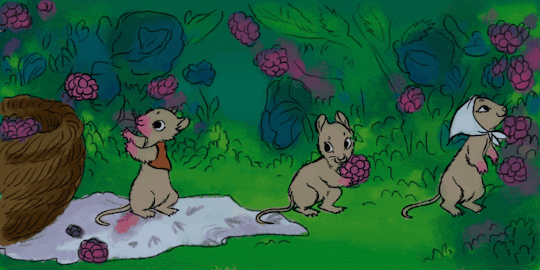Text
Hands Up - 6arelyhuman
ATTENTION
If you see this you are OBLIGATED to reblog w/ the song currently stuck in your head :)
436K notes
·
View notes
Text
since the old version of this post was flagged for 'adult content'...

reblog this post if your account is a trans safe space or owned by a trans person!
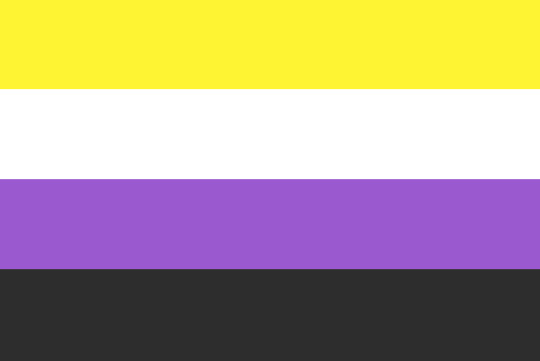
along with that, reblog if your account is a trans non-binary spectrum safe space or owned by someone on the trans enby spectrum!
164K notes
·
View notes
Text
my cupioromantic ass hating itself
i would never want to be anything but aro
being aro is a blessing
being aro is my favorite thing
169 notes
·
View notes
Text
I dont think anything on this earth tickles me so hard as how busted white people look in the yakuza franchise






its so dhsjdjfjxjfjgk
15K notes
·
View notes
Text
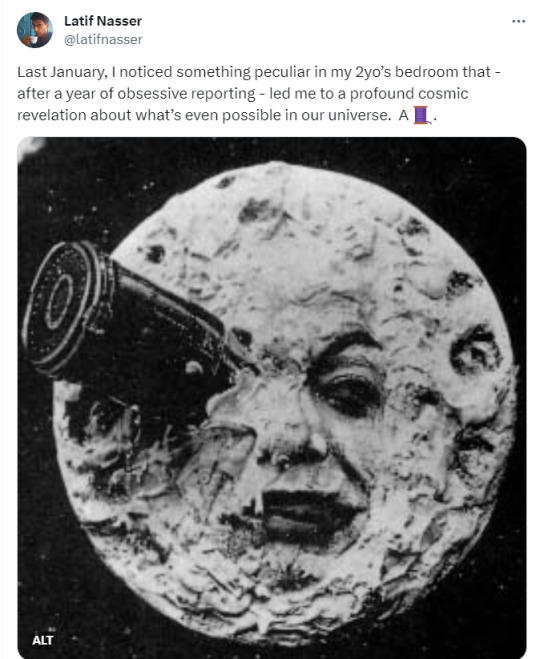

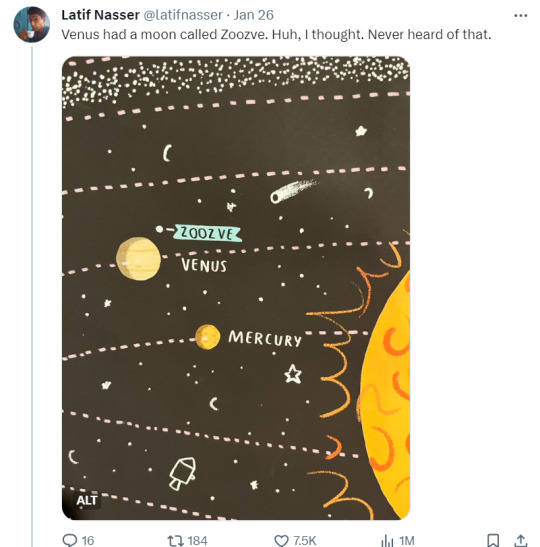
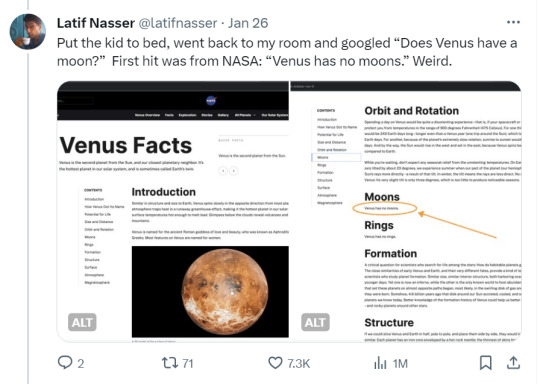
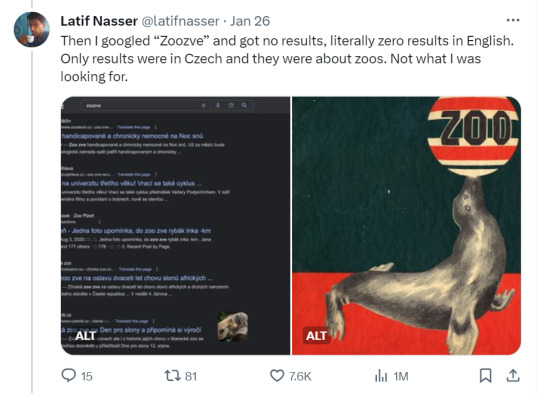
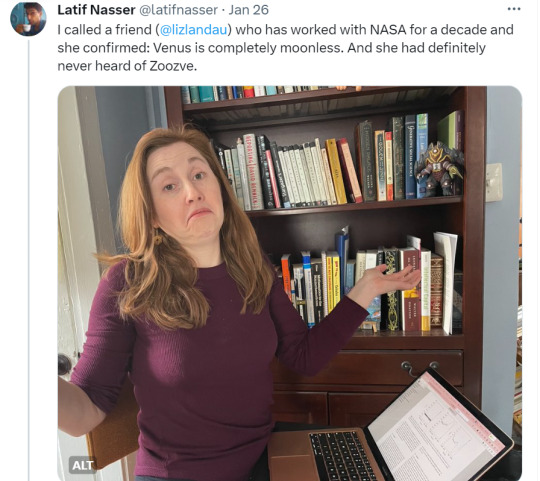



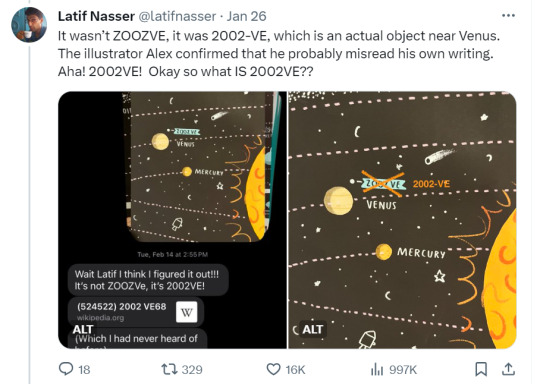


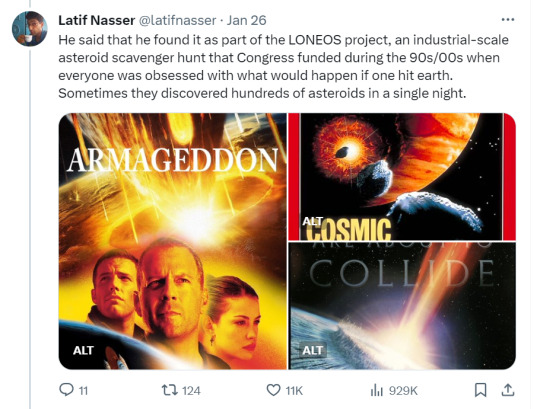

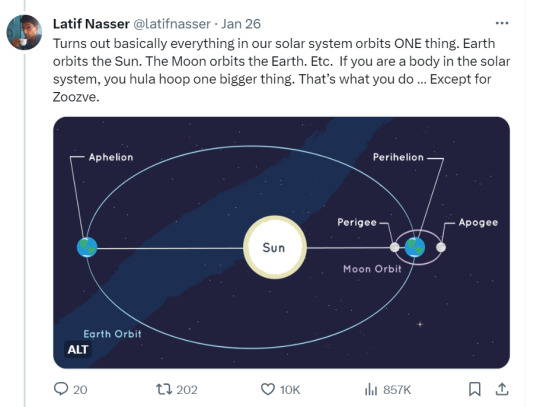
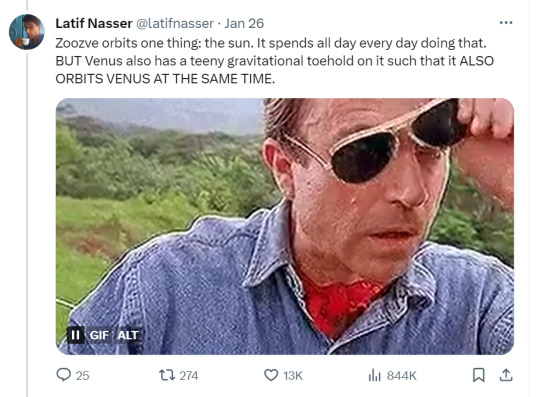
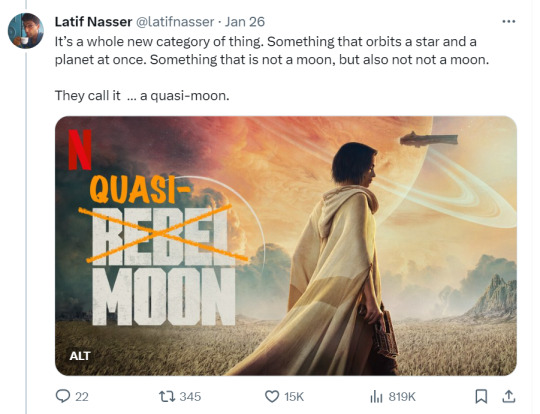



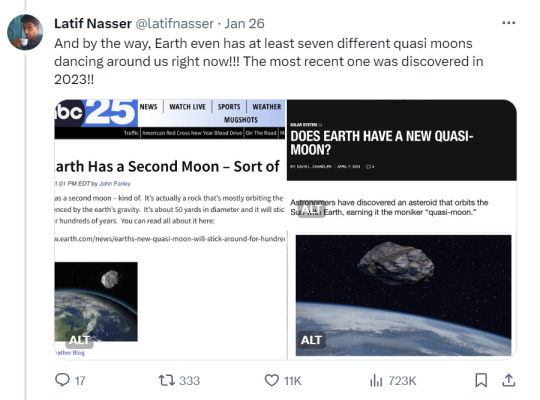

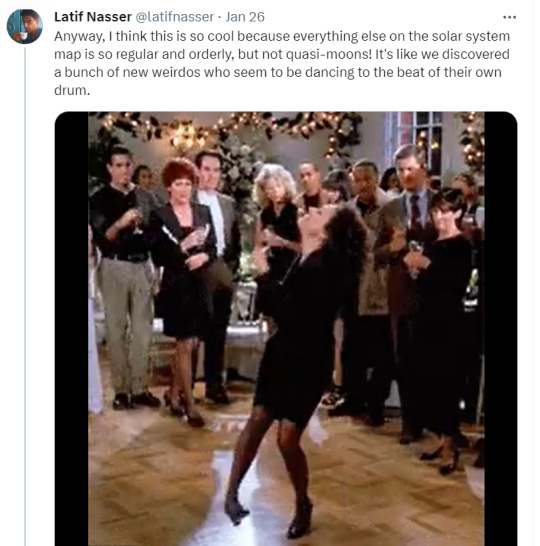
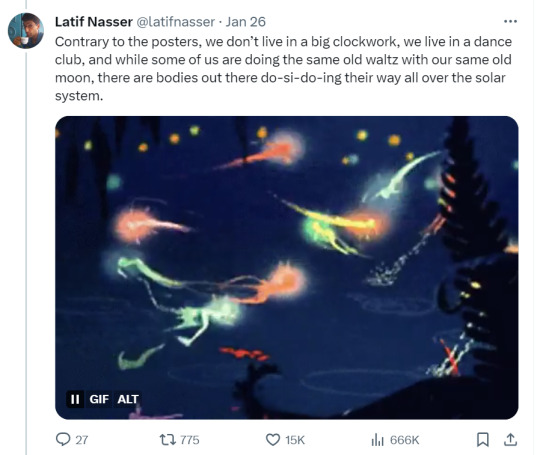
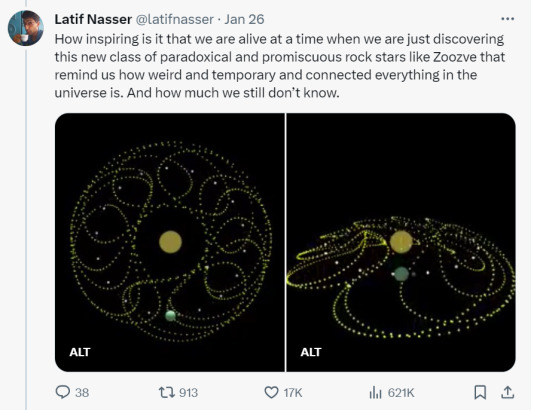
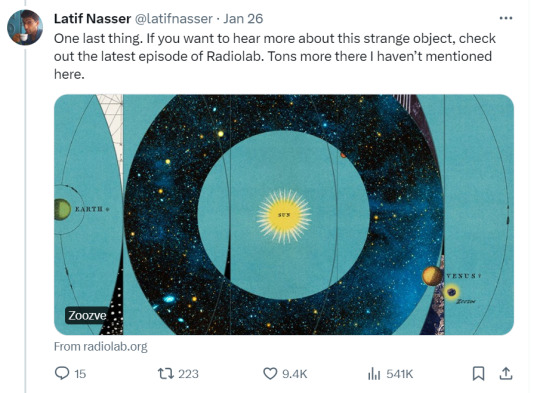
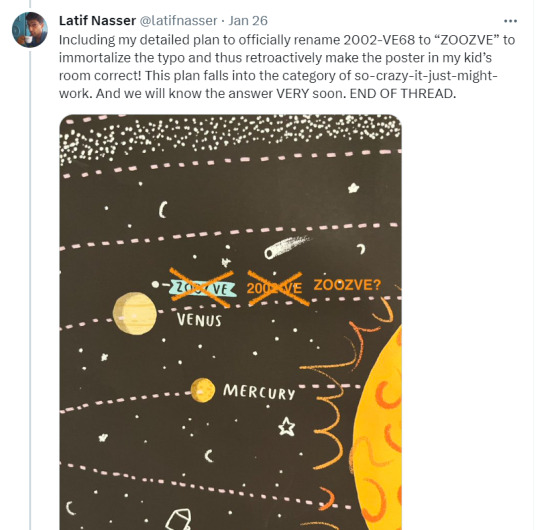
Zoozve, my beloved
#this permanently changed my brain chemistry#i'm not even exaggerating#thanks jack#quasi moons will NEVER leave my mind from now on#especially zoozve#she's my quasidaughter because she's the quasimoon of one of my favorite planets from the solar system#if not THE favorite#alongside jupiter#and saturn#and uranus#and mars#and neptune#and earth#and mercury#yk i might love them all#just an itty bitty yk#anyways YIPPEEEEEE#i love this thread so much i cannot stress this enough
118K notes
·
View notes
Text
HOW DID THE MOON FORM??
Blog#392
Saturday, April 13th, 2024.
Welcome back,
There used to be a number of theories about how the Moon was made and it was one of the aims of the Apollo program to figure out how we got to have our Moon,' says Sara.
Prior to the Apollo mission research there were three theories about how the Moon formed. The evidence returned from these missions gave us today's most widely accepted theory.
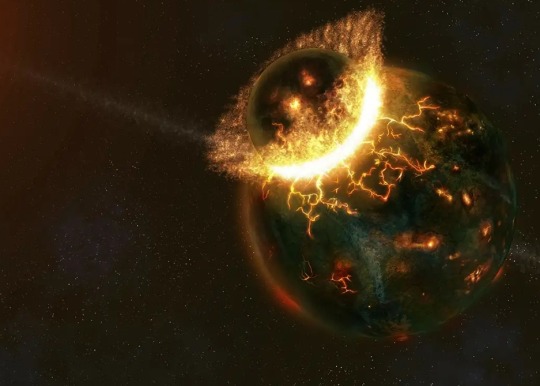
Capture theory suggests that the Moon was a wandering body (like an asteroid) that formed elsewhere in the solar system and was captured by Earth's gravity as it passed nearby.
The accretion hypothesis proposes that the Moon was created along with Earth at its formation.
The fission theory suggests Earth had been spinning so fast that some material broke away and began to orbit the planet.
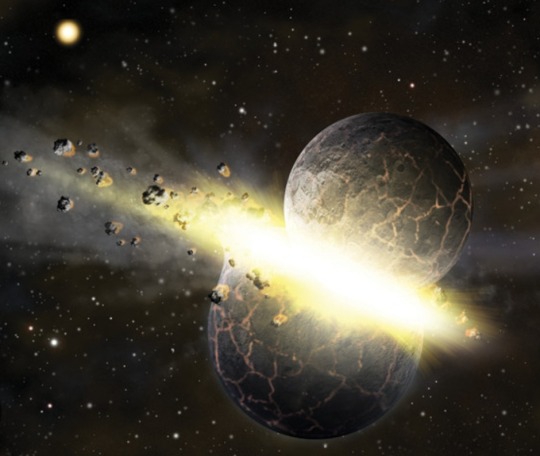
The giant-impact theory is most widely accepted today. This proposes that the Moon formed during a collision between the Earth and another small planet, about the size of the planet Mars. The debris from this impact collected in an orbit around Earth to form the Moon.
The Apollo missions brought back over a third of a tonne of rock and soil from the Moon. This provided some clues on how the Moon may have formed.

'When the Apollo rocks came back, they showed that the Earth and the Moon have some remarkable chemical and isotopic similarities, suggesting that they have a linked history,' says Sara.
'If the Moon had been created elsewhere and was captured by the Earth's gravity we would expect its composition to be very different from the Earth's.

'If the Moon was created at the same time, or broke off the Earth, then we would expect the type and proportion of minerals on the Moon to be the same as on Earth. But they are slightly different.'
The minerals on the Moon contain less water than similar terrestrial rocks. The Moon is rich in material that forms quickly at a high temperature.
'In the seventies and eighties there was a lot of debate which led to an almost universal acceptance of the giant impact model.'

Lunar meteorites are also an important source of data for studying the origins of the Moon.
'In some ways meteorites can tell us more about the Moon than Apollo samples because meteorites come from all over the surface of the Moon,' adds Sara, 'while Apollo samples come from just one place near the equator on the near side of the Moon.'
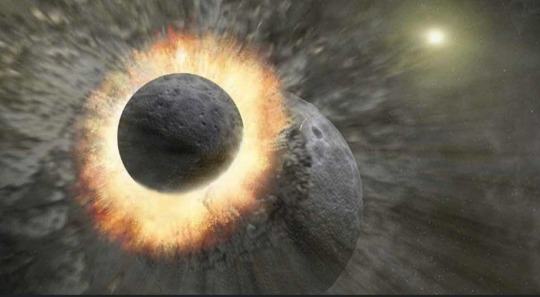
Before Earth and the Moon, there were proto-Earth and Theia (a roughly Mars-sized planet).
The giant-impact model suggests that at some point in Earth's very early history, these two bodies collided.
During this massive collision, nearly all of Earth and Theia melted and reformed as one body, with a small part of the new mass spinning off to become the Moon as we know it.
Scientists have experimented with modelling the impact, changing the size of Theia to test what happens at different sizes and impact angles, trying to get the nearest possible match.
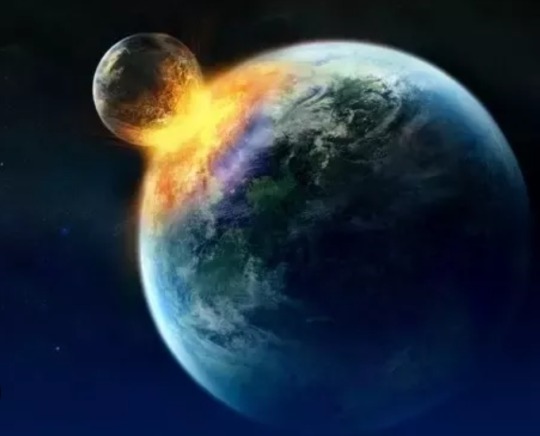
'People are now tending to gravitate towards the idea that early Earth and Theia were made of almost exactly the same materials to begin with, as they were within the same neighbourhood as the solar system was forming,' explains Sara.
'If the two bodies had come from the same place and were made of similar stuff to begin with, this would also explain how similar their composition is.'
Originally published on https://www.nhm.ac.uk
COMING UP!!
(Wednesday, April 17th, 2024)
"IS TIME AN ILLUSION??"
57 notes
·
View notes
Note
Regarding your post about solar eclipses on other planets - I know other planets get solar eclipses, too, but do any other planets besides earth get total solar eclipses?
Yep! I mean, that's why I worded that post specifically that way, and included links to the wikipedia articles about solar eclipses on the gas giant planets in our solar system.
So, a total solar eclipse happens on earth because the angular size of the moon as seen from the surface of the earth is (usually) larger than the angular size of the sun, right? (We see an annular eclipse when the moon's angular size is a little smaller than the sun's, depending on the relative distances of each since orbits are elliptical and those aren't constant.)
Jupiter, Saturn, Uranus and Neptune are all quite a bit farther from the sun, so the angular size of the sun is much smaller, and have fairly large moons. All of Jupiter's galilean moons are large enough and close enough to the planet that they're large enough to fully occult (cover) the sun and therefore produce total eclipses.
Similarly on Saturn:
Seven of Saturn's satellites – Janus, Mimas, Enceladus, Tethys, Rhea, Dione and Titan – are large enough and near enough to eclipse or occult the Sun, or in other words to cast an umbra on Saturn.
At this distance, the sun covers only about 3 arcminutes in the sky of Saturn. In comparison, the seven major moons of Saturn have angular diameters of 5–10' (Mimas), 5–9' (Enceladus), 10–15' (Tethys), 10–12' (Dione), 8–11' (Rhea), 14–15' (Titan), and 1–2' (Iapetus). Iapetus is Saturn's third largest moon, but is too far away to completely eclipse the Sun. Janus, a very close moon to Saturn, has an angular diameter of about 7', meaning that it can fully cover the Sun.
and Uranus:
Twelve satellites of Uranus—Cressida, Desdemona, Juliet, Portia, Rosalind, Belinda, Puck, Miranda, Ariel, Umbriel, Titania and Oberon—are large enough and near enough to eclipse the Sun.
and Neptune:
All of Neptune's inner moons and Triton can eclipse the Sun as seen from Neptune.
All other satellites of Neptune are too small and/or too distant to produce an umbra.
From this distance, the Sun's angular diameter is reduced to one and a quarter arcminutes across. Here are the angular diameters of the moons that are large enough to fully eclipse the Sun: Naiad, 7–13'; Thalassa, 8–14'; Despina, 14–22'; Galatea, 13–18'; Larissa, 10–14'; Proteus, 13–16'; Triton, 26–28'.
and also Pluto, really:
Charon has an angular diameter of 4 degrees of arc as seen from the surface of Pluto; the Sun appears much smaller, only 39 to 65 arcseconds. By comparison, the Moon as viewed from Earth has an angular diameter of only 31 minutes of arc, or just over half a degree of arc. Therefore, Charon would appear to have eight times the diameter, or 25 times the area of the Moon; this is due to Charon's proximity to Pluto rather than size, as despite having just over one-third of a Lunar radius, Earth's Moon is 20 times more distant from Earth's surface as Charon is from Pluto's. This proximity further ensures that a large proportion of Pluto's surface can experience an eclipse. Because Pluto always presents the same face towards Charon due to tidal locking, only the Charon-facing hemisphere experiences solar eclipses by Charon.
So all of these planets (modulo the lack of surfaces/living beings, but like, that's also pretty special to Earth completely separately from eclipses) experience the nighttime-like darkness caused by the umbra (shadow) of the eclipse (occultation).
Now, as a few people have pointed out in the notes, the ring of fire deal IS pretty special, which happens because the angular size of the moon and sun are often SO similar. (Maybe Iapetus is similar enough with the solar angular size sometimes depending where Saturn is in its orbit, but at a few arcminutes instead of half a degree you can imagine the effect being somewhat less amazing. Then again, I bet solar occultations by Saturn's rings are pretty amazing, so I'm not going to hold that against the planet.)
In no way do I think this makes total solar eclipses less awesome, or think that the excitement is misplaced. It's a pretty amazing special event! It's also one that won't even exist for the earth forever, since the moon moves a few centimeters away from us each year. But as an astronomer I think it's cool that there are eclipses (and occultations and transits of the sun by moons with smaller angular sizes!) on other planets too! Though, the post I made was mostly a kneejerk eyeroll complaint about a silly factual error that might just be because the OP of the post I was annoyed by was thinking about some other facet of our solar eclipses as being unique than how it was worded. Since we can't go to any other planet to watch eclipses (that would add a whole extra layer to astrotourism), our eclipses on earth are pretty special. If you ever have the opportunity to see one, I wholly recommend going! It's really amazing.
In conclusion: here's an Io solar eclipse on Jupiter taken by the Hubble Space telescope:

[Image in black and white shows Jupiter's volcanic moon Io passing above the turbulent clouds of the giant planet, on July 24, 1996. There's a large black spot on Jupiter which is Io's shadow. The smallest details visible on Io and Jupiter are about 100 miles across (about 160 kilometres). Bright patches visible on Io are regions of sulfur dioxide frost. Io is roughly the size of Earth's moon, but 2000 times farther away.]
And here's the April 8th eclipse of the sun by the moon on Earth as seen by the GOES satellite:

[A gif of the earth showing the GOES EAST view of North and South America on April 8th over the course of the total solar eclipse. A shadow of the moon passes from the left to the upper right side of the view of the earth.]
40 notes
·
View notes
Text
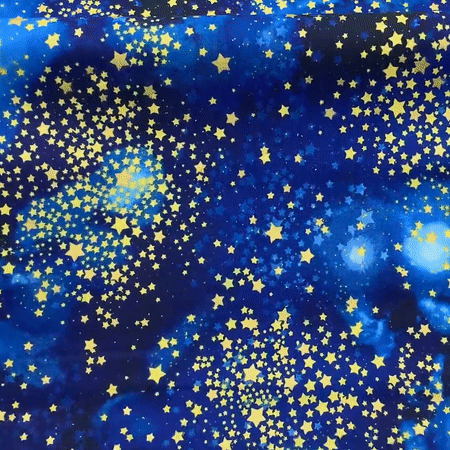








tinky stimboard :D
⛧ with astronomy stims !
☾ self-indulgent !
x | x | x
x | ! | x
x | x | x
89 notes
·
View notes

